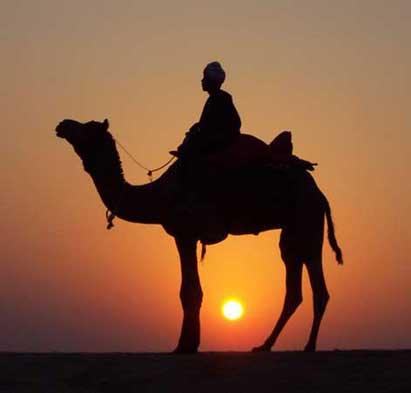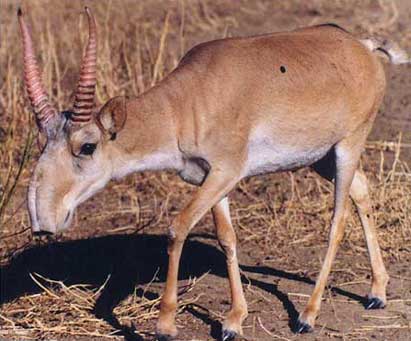The shadow of the camels in the desert
2001/04/04 Elhuyar Zientzia

In the photo you can see the shadows of the camels… Or are they those of the dromedaries? We often mix both animals and we are not very clear who has two jets and one. The truth is that confusion is easy, both of a bulge and of two, since they belong to the genus Camelus, moreover, they are the only two species of this genus. The dromedary has a single bulge and its scientific name is Camelus dromedarius; the camel (Camelus bactrianus) is of two bodies.
Both are large ruminant mammals that are used as huts or carts in many regions of Africa and Asia. Its legs are long and its wide feet are suitable for walking through the hot sand and snow. They have chest and knee pads to maintain body weight when they are shed and a special way to run. To protect yourself from residual desert storms have two eyelashes in your eyes, the ability to close your nostrils and a hairy ear inlet.
The ancestors of camels and dromedaries were born in North America about 40 million years ago and opened to South America and Asia a million years ago. Later they disappeared in their original territory and only in the southern hemisphere are species of this family (guanaco, llama, vikuina and alpaca).
Camelus species are found in Asia and Africa. The camel, which has two bulges, lives in the highlands from Turkistan to Mongolia, and has long been used to transport the cargo. From land to stream it is two meters long and can circulate 50 km a day with load.
Dromedaries are common animals in North Africa, the Middle East and India. Although they are mainly used for the transport of loads, they also take advantage of their hair, milk, meat and leather. They have a lighter body and longer legs than the camel, less hair and a single bulky. They also run faster.
Both dromedary and camel can eat non-edible plants for other species. When they have a lot of food, they accumulate fat in the incandescent and when the situation gets worse they can get the energy and water they need. In addition, your body loses very little water and when there is water shortage, it can last a long time without drinking. Despite losing 25% of their weight due to dehydration, they are able to survive.
Dromedaries have moved to other parts of the world, such as the XIX. In the mid-twentieth century they were introduced in Australia. At present, some 25,000 live in isolated areas of Australia.

Gai honi buruzko eduki gehiago
Elhuyarrek garatutako teknologia






